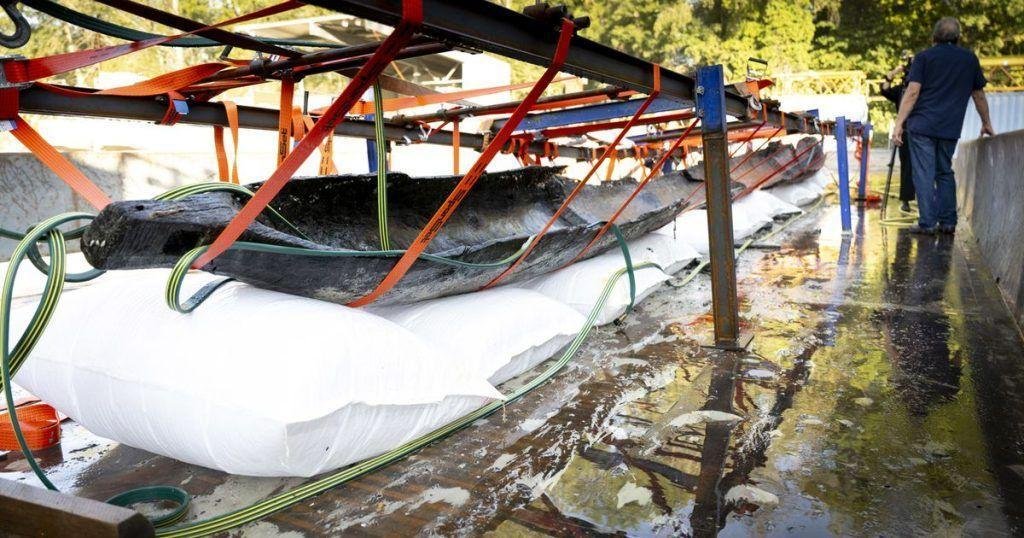Researchers have unearthed a remarkably well-preserved 2,500-year-old canoe from the Early Iron Age in Lake Neuchâtel, western Switzerland.
 A 2,500-year-old canoe was discovered in Lake Neuchâtel. Credit: Cantonal Archaeology of Vaud
A 2,500-year-old canoe was discovered in Lake Neuchâtel. Credit: Cantonal Archaeology of Vaud
The find, which provides invaluable insights into the prehistory of the region, was announced at a press conference by archaeologists from the Vaud canton’s archaeology department.
The discovery of the ancient canoe was initially made in 2021 when an archaeological survey of the lake, conducted using an airplane, identified an unusual shape beneath the water’s surface.
Following this revelation, a meticulous plan was set in motion to retrieve the valuable artifact. The excavation operation, which took place at a depth of 3.5 meters, required months of preparation and involved experts in underwater salvage techniques.

The canoe, measuring approximately 12 m (42 ft.) in length and 90 cm (3 ft.) in width, was made from a single oak trunk. Despite its age, it is one of the largest and most complete canoes from this era ever discovered in Switzerland. Archaeologists believe it was likely used for fishing, transporting goods, or transporting people.
Despite its age, it has survived remarkably well, although parts of its sides were damaged, likely due to past storms. The portion of the canoe that was buried in sediment was also found to be significantly cracked.
Nicole Pousaz, cantonal archaeologist, emphasized the historical significance of this find, stating, “This is an archaeological discovery of considerable importance for our understanding of the prehistory of the region. Its radiocarbon analysis dates it to between 750 and 520 BCE, a time when there were no villages on the shores of the lakes. It is one of the very few boats from this period in Switzerland that has been preserved almost in its entirety.”
The canoe will now undergo in-depth analysis in a specialized facility. Researchers plan to use dendrochronological dating analyses along with pH๏τogrammetry and laser measurements to create a detailed three-dimensional (3D) model of the ancient vessel.
Lake Neuchâtel in western Switzerland has a rich history of ancient civilizations, with many Neolithic and Bronze Age artifacts discovered along its shores. This latest find joins a legacy of archaeological discoveries in the region, including the famous “La Tène Boat” pulled from Lake Neuchâtel in the 19th century.
The retrieval of this well-preserved canoe offers archaeologists a unique opportunity to deepen their understanding of life during the Early Iron Age.





